Dr. Abhilash K.R.

Dr. Abhilash K.R. from NCSCM is an experienced scientist specializing in marine biodiversity and ecology with a strong research profile on coastal ecosystem was interviewed by Dr. Debleena Bhattacharya,Associate Editor of InnoHEALTH Magazine.
Marine Ecosystems & Biodiversity
How would you describe the current state of marine biodiversity along India’s coastline?
India’s coastline, spanning approximately 7,500 kilometres, is home to diverse marine ecosystems, including coral reefs, mangroves, seagrass beds, estuaries, mudflats, saltmarshes, rocky cliffs and sandy beaches. However, marine biodiversity in these regions faces significant challenges due to rampant developmental activities and climate change.
This tropical coastline boasts a rich marine biodiversity, though facing threats from human activities and degradation. India’s coastal waters support a vast range of marine life, including over 2,500 fish species, 100+ species of sharks and rays, and several endangered species like the olive ridley turtle, dugong, and Gangetic dolphin. The Gulf of Mannar, Sundarbans, and Andaman & Nicobar Islands are biodiversity hotspots with thriving coral reefs and mangroves. India contributes significantly to global marine fish diversity, with 2,492 marine fish species, representing 7.4% of the world’s total.
Important Coastal and Marine Areas (ICMBAs): 106 coastal and marine sites have been identified and prioritized as Important Coastal and Marine Areas (ICMBAs) by the Wildlife Institute of India.
Despite its richness, marine biodiversity is under threat from:
- Overfishing and Illegal Fishing: Unsustainable fishing practices, including bottom trawling and bycatch, have led to declining fish stocks.
- Coastal Pollution: Industrial discharge, plastic waste, and oil spills have significantly degraded marine habitats, especially in regions like Mumbai and Chennai.
- Climate Change & Coral Bleaching: Rising sea temperatures have caused coral bleaching, particularly in the Lakshadweep and Andaman reefs.
- Habitat Destruction: Mangrove deforestation and unregulated coastal development threaten breeding grounds for many marine species.
India has taken steps to protect marine biodiversity through:

- Protected Marine Areas: Reserves like the Gulf of Mannar Marine National Park and the Sundarbans Biosphere Reserve help conserve critical ecosystems.
- Sustainable Fishing Policies: The Marine Fisheries Regulation Act and seasonal fishing bans help control overfishing.
- Blue Economy Initiatives: Programs promoting sustainable marine resource use, such as the Deep Ocean Mission, focus on balancing economic development with conservation.
- Swachh Bharat Abhiyan: Clean India Mission, is a nationwide cleanliness campaign launched by the Government of India in 2014. Coastal clean-up missions and Blue flag beach certification were introduced to effectively clear the coastal areas from garbage, especially plastics.
While efforts are being made, marine biodiversity along India’s coastline remains vulnerable. Strengthening marine protection laws, promoting sustainable tourism, and increasing community participation in conservation can help preserve India’s rich marine life for future generations.
What are some lesser-known but critically endangered marine species that deserve more public attention?
Several lesser-known yet critically endangered marine species in India’s coastal waters deserve more attention due to their ecological importance and declining populations. Here are some species that need urgent conservation efforts:

- Ganges Shark (Glyphis gangeticus): This rare, Critically Endangered (IUCN) riverine shark is one of the few species adapted to freshwater and estuarine environments, playing a crucial role in the ecosystem. Habitat destruction, pollution in the Ganges and Brahmaputra river systems, and accidental bycatch.
- Dugong (Dugong dugon) – India’s Only Herbivorous Marine Mammal: Dugongs are Critically Endangered in India essential for maintaining healthy seagrass beds, which support fish populations and carbon sequestration. Seagrass habitat loss due to coastal development, fishing net entanglement, and boat strikes. Found along the Gulf of Mannar, Palk Bay, and Andaman & Nicobar Islands.
- Pondicherry Shark (Carcharhinus hemiodon): A small, elusive shark once found along India’s east and west coasts, its disappearance signals severe marine ecosystem degradation. It is Critically Endangered and Possibly Extinct in the Wild. Overfishing, habitat loss, and lack of conservation awareness.
- Hawksbill Turtle (Eretmochelys imbricata): They fall under the Critically Endangered category of IUCN list. Plays a key role in maintaining coral reef health by controlling sponge populations. Illegal poaching for shell trade, climate change affecting nesting sites, and entanglement in fishing gear. Found in Andaman & Nicobar Islands, Lakshadweep, Gulf of Mannar.
- Seahorses (Hippocampus spp.): These Critically Endangered slow-moving fish are vital for maintaining the balance of seagrass beds and coral reef ecosystems. Overexploitation for traditional medicine, habitat destruction, and bycatch from bottom trawling. Found along Tamil Nadu and Maharashtra coasts.
- Indian Ocean Humpback Dolphin (Sousa plumbea): These coastal dolphins help indicate the health of marine ecosystems and are vital for marine food chains. They are critically endangered in Indian waters. Coastal pollution, boat traffic, and accidental entanglement in fishing nets form the reason for their affecting their survival, and are mostly found along the coasts of Goa, Kerala, Odisha.
- Giant Guitarfish (Glaucostegus spp.): These critically endangered (IUCN) ray-like creatures are important benthic predators, keeping seabed ecosystems in balance. Overfishing for their fins and habitat destruction are the major threats. Found along the Andhra Pradesh, Tamil Nadu, and Gujarat coasts.
These species remain overlooked due to limited public awareness and inadequate conservation funding. Strengthening marine protected areas (MPAs), promoting sustainable fishing, and enforcing anti-poaching laws are crucial for their survival.
How does deep-sea exploration enhance our understanding of ecological balance?
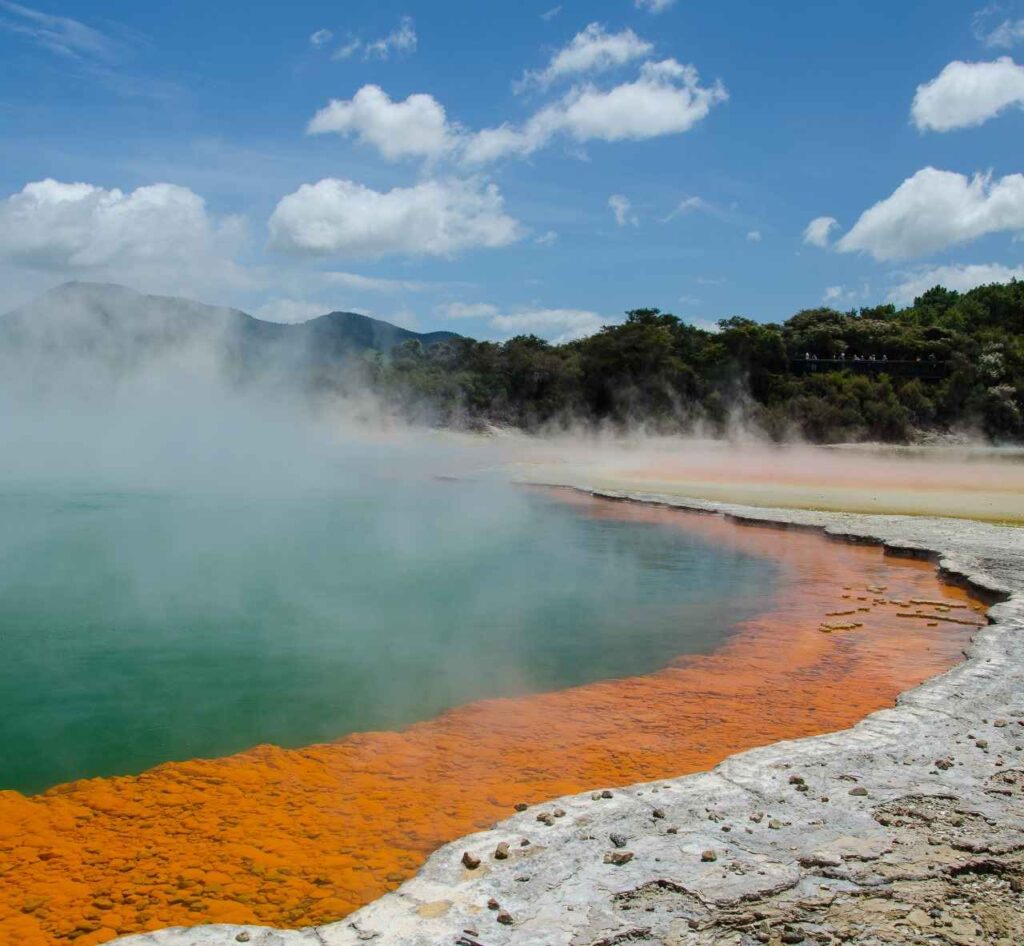
Discovering New Species and Their Roles in Ecosystems: The deep sea is home to thousands of unknown species, many of which contribute to nutrient cycling, food webs, and biodiversity regulation. Recent deep-sea explorations in the Indian Ocean have revealed new species of bioluminescent fish, deep-sea corals, and giant single-celled organisms that play crucial roles in carbon sequestration.
Understanding Deep-Sea Food Chains and Energy Transfer: Studying how deep-sea organisms survive in extreme conditions (e.g., hydrothermal vents, abyssal plains) helps scientists understand global energy transfer. Hydrothermal vent communities depend on chemosynthesis rather than photosynthesis, demonstrating an alternative energy flow system that supports entire ecosystems.
Monitoring Climate Change Impacts on Marine Life: The deep sea acts as a carbon sink, absorbing excess carbon dioxide and regulating global temperatures. Scientists have observed that deep-sea coral reefs serve as long-term carbon storage systems, but rising ocean acidity threatens their survival.
Investigating Ocean Currents and Nutrient Cycling: Deep-sea exploration helps map thermohaline circulation, which drives global ocean currents that regulate temperature and nutrient distribution. The Indian Ocean Dipole and monsoon cycles are influenced by deep-sea currents, affecting fisheries and coastal ecosystems.
Identifying Human Impacts and Environmental Threats: Deep-sea mining, plastic pollution, and industrial waste dumping are disrupting deep-sea habitats. Recent expeditions have found microplastics in the Mariana Trench, highlighting the far-reaching impact of pollution on marine ecosystems.
Supporting Medical and Biotechnological Innovations: Deep-sea organisms produce unique biochemical compounds with potential applications in medicine, bioengineering, and sustainable industries. Bacteria from hydrothermal vents have inspired new antibiotics and enzyme-based industrial solutions.
By studying deep-sea ecosystems, we gain critical insights into how marine life adapts to extreme conditions, maintains biodiversity, and regulates the planet’s climate. Understanding these processes helps in conserving marine ecosystems, mitigating climate change, and developing sustainable ocean management strategies.
Climate Change & Ocean Health
In what ways is climate change already affecting India’s marine ecosystems?
Climate change is already impacting India’s marine ecosystems through ocean warming, acidification, rising sea levels, and changes in ocean currents, leading to coral bleaching, seagrass destruction, shifts in fish populations, and increased frequency of extreme weather events.
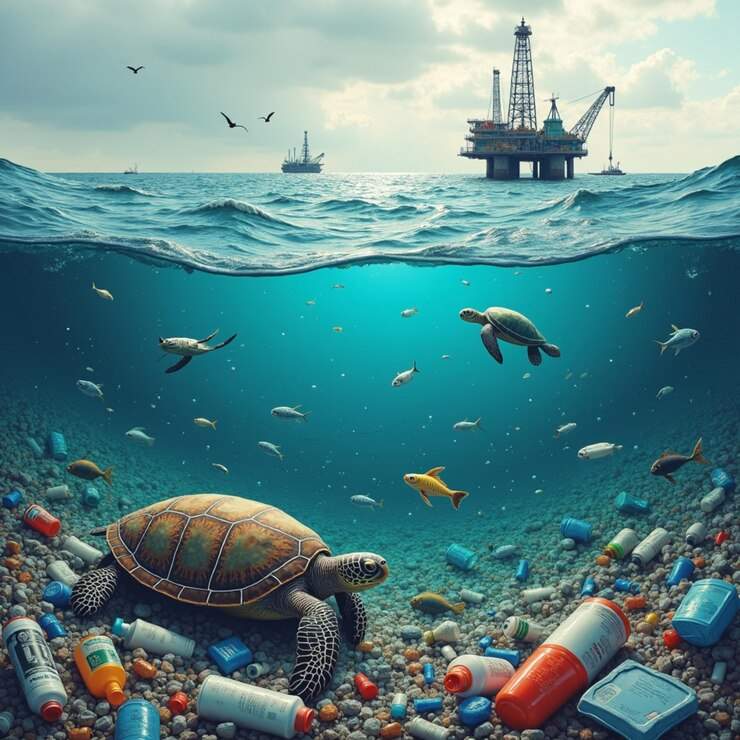
Ocean Warming and Heatwaves: The Indian Ocean is experiencing increased sea surface temperatures (SST), with some areas entering a “near-permanent heatwave state”. This warming is not limited to the surface, with the heat content of the Indian Ocean increasing significantly. The Indian Institute of Tropical Meteorology (IITM), has undertaken various observations and studies which reveal that the Indian Ocean is warming faster than the global average. Warming waters can lead to coral bleaching, seagrass destruction, and the collapse of kelp forests. The study by the Indian Institute of Tropical Meteorology (IITM) says that the tropical Indian Ocean will likely be in a “near-permanent heatwave state”. Rising temperatures and sea-level rise are stressing mangrove forests and seagrass ecosystems, which are crucial for biodiversity and carbon sequestration. Areas like Sundarbans (West Bengal), Bhitarkanika (Odisha), and Pichavaram (Tamil Nadu) are impacted. These ecosystems are vital nurseries for fish, provide coastal protection, and store massive amounts of carbon.
Ocean Acidification: The ocean absorbs a significant amount of atmospheric carbon dioxide, leading to increased acidity. This acidification can harm marine life, particularly corals and shell-forming organisms, by making it harder for them to build and maintain their skeletons and shells. Indian Institute of Tropical Meteorology (IITM), suggests that the global mass bleaching of 1988 predominantly affected the coral reefs of the Indian Ocean. Lakshadweep, Andaman & Nicobar Islands, and Gulf of Mannar reefs have experienced major bleaching events in 1998, 2010, and 2020. The Coral reefs are believed to support 25% of all the marine species, protect coastlines from erosion, and sustain fisheries.
Rising Sea Levels: Sea level rise, accelerated by melting glaciers and thermal expansion of water, threatens coastal areas and ecosystems. This can lead to saltwater intrusion into freshwater sources, impacting agriculture and drinking water quality. Coastal erosion and flooding become more frequent, damaging infrastructure and habitats. Sundarbans (West Bengal), Odisha, Tamil Nadu, and Kerala are experiencing rapid coastal erosion.
Changes in Ocean Currents and Upwelling: Climate change can disrupt ocean currents and upwelling patterns, which are crucial for nutrient distribution and marine productivity. Changes in these patterns can affect fish populations, their distribution, and the overall health of the marine ecosystem.
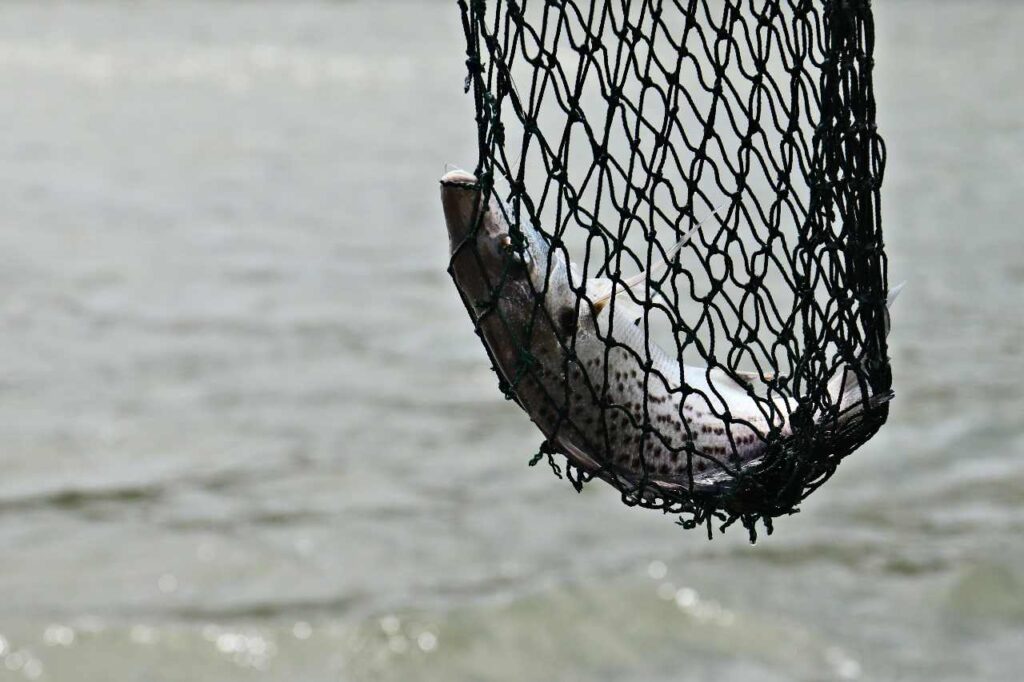
Impacts on Fisheries: Warming waters can cause fish populations to shift to cooler waters, potentially leading to declines in fish catches and impacting livelihoods of fishing communities. Changes in ocean conditions can also affect the abundance and distribution of other marine species, including plankton, which are vital for the marine food web. According to a study by CMFRI Kochi the Indian mackerel (Rastrelliger kanagurta) is shifting to higher latitudes and deeper water, indicating a shift in fish distribution due to warming waters. Declining fish stocks threaten millions of livelihoods in India’s fishing industry.
Extreme Weather Events: Climate change is linked to more frequent and intense extreme weather events, such as cyclones and floods, which can devastate coastal areas and their ecosystems. The frequent occurrence of extreme events can cause widespread damage to infrastructure, habitats, and fisheries and serious issues to the survival of coastal populations by the impact of life, infrastructure and livelihood.
Ocean acidification is often underreported—how serious is this issue, and what might be its long-term impacts?
Ocean acidification is one of the most severe yet overlooked consequences of climate change, caused by increased carbon dioxide (CO₂) absorption by seawater. Since the Industrial Revolution, ocean acidity has increased by 30%, and projections indicate it could rise by 150% by 2100 if CO₂ emissions continue unchecked. This chemical shift threatens marine biodiversity, fisheries, and global food security—with particularly serious implications for India’s coastal ecosystems. Ocean acidification poses a significant risk to the Indian coastline, impacting marine ecosystems, fisheries, and coastal communities. It’s driven by the ocean’s absorption of excess carbon dioxide, leading to a decrease in pH and carbonate ion availability, which harms marine life, especially those with calcium carbonate shells like corals and shellfish.
- Ocean acidification occurs when the ocean absorbs excess carbon dioxide (CO2) from the atmosphere, leading to a decrease in pH (becoming more acidic).
- This process reduces the availability of carbonate ions, which are essential for marine organisms to build and maintain their shells and skeletons.
- The ocean has absorbed about 30% of the CO2 emitted by human activities, causing a measurable decrease in pH since the industrial era.
Ocean acidification can disrupt marine ecosystems, impacting the growth and survival of various species, including plankton, corals, shellfish, and fish. Acidification can lead to a decline in fisheries and aquaculture, impacting livelihoods and food security in coastal communities. The Indian coastline, with its extensive Exclusive Economic Zone (EEZ) and a large coastal population, is particularly vulnerable to the impacts of ocean acidification. Ocean acidification exacerbates the effects of warming on coral reefs, which are important for food provisioning, ecotourism, and coastal infrastructure protection. Ocean acidification can also lead to a decline in commercial fisheries and the coast-based tourism industry.
The science behind ocean acidification can be complex, making it difficult for the public to understand and appreciate the threat. There may be a lack of awareness and understanding of the issue among policymakers and the public, leading to insufficient action. Ocean acidification is often overshadowed by other pressing environmental issues, such as climate change and plastic pollution
Addressing the root cause of ocean acidification by reducing greenhouse gas emissions is crucial. More research is needed to understand the impacts of ocean acidification on marine ecosystems and develop effective adaptation strategies. Coastal communities need to develop adaptation strategies to mitigate the impacts of ocean acidification, such as building resilient infrastructure and diversifying livelihoods. Raising public awareness about ocean acidification and its impacts is essential to mobilize action.
What are your thoughts on the role of mangroves and coral reefs as climate buffers?
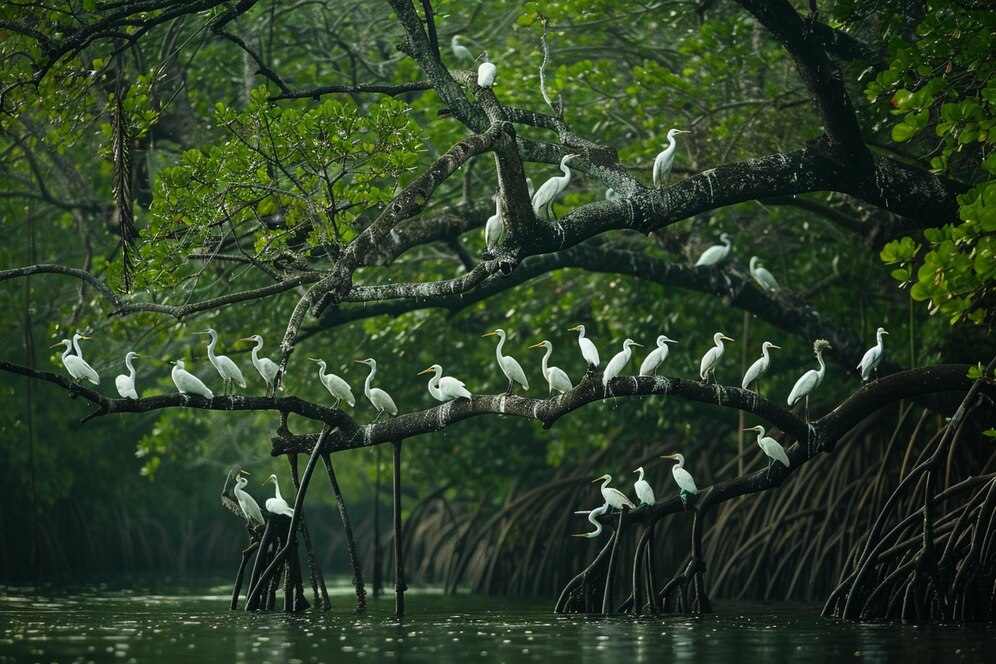
Mangroves and coral reefs act as vital climate buffer solutions by protecting coastlines from erosion, storms, and rising sea levels, while also storing vast amounts of carbon, thus mitigating climate change.
Mangroves provide Coastal Protection with their complex root systems, act as natural barriers against storm surges, waves, and erosion, protecting coastal communities and infrastructure.
Mangroves are highly efficient at capturing and storing carbon, making them a valuable tool in combating climate change.
Mangrove provide various Ecosystem Services as habitat and nursery grounds for various marine species, supporting healthy fisheries and biodiversity.
Mangroves help filter pollutants and improve water quality in coastal areas.
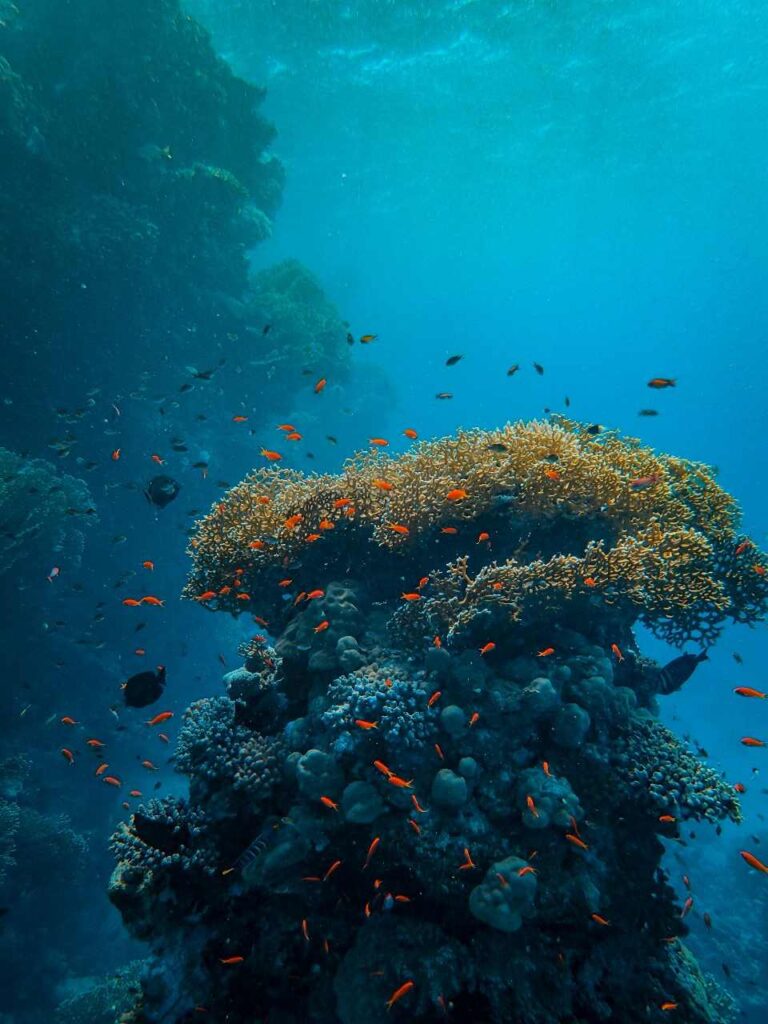
Mangroves help in adaptation and mitigation against climate extreme events and are considered a natural solution to protect against the devastation caused by tsunamis, rising sea levels, and severe storms resulting from climate change, by absorbing and dissipating the power of waves. They are a cornerstone in Nature-based Solutions (NbS) for reducing coastal flood risks.
Coral reefs act as natural breakwaters, absorbing wave energy and reducing the impact of storms and erosion on coastlines. They are among the most ecologically and economically valuable ecosystems, supporting a vast array of marine life. They provide fisheries, tourism, and other valuable resources to coastal communities.
Protecting coral reefs and mangroves is critical for maintaining the ocean’s climate change resilience.
Coral reefs and seagrasses buffer habitats further inland from storms and wave damage.
The ridged structure of the corals acts as a natural barrier that reduces the energy within waves by up to 97%, thus lowering the impact of Tsunamis and hurricanes globally.Mangroves and coral reefs are nature’s best defence against climate change, but they are rapidly disappearing. Protecting and restoring these ecosystems is essential for safeguarding coastal communities, biodiversity, and global climate stability.
Recent Developments & Global Environmental News
The world recently observed a record increase in global ocean temperatures. What implications could this have for marine life and weather patterns in the Indian subcontinent?
Rising global temperatures will likely lead to more frequent and intense heat waves, droughts, and floods in the Indian subcontinent, impacting marine life with ocean acidification and warming, and potentially causing shifts in monsoon patterns and increased coastal erosion. With built-up urban areas rapidly becoming “heat-islands”, urban planners will need to adopt measures to counteract this effect.
Changes in Monsoon Patterns: The Indian monsoon, which is crucial for agriculture and water resources, could become more unpredictable and extreme, with potential for both more frequent and intense droughts and floods.
Increased Heatwaves and Droughts: Warming temperatures will likely lead to more frequent and intense heatwaves, which can have severe impacts on human health, agriculture, and water resources.
Increased Cyclonic Activity: Warmer ocean temperatures can fuel the intensification of cyclones, leading to more destructive storms.
Sea Level Rise: Melting glaciers and ice sheets due to rising temperatures contribute to sea level rise, which can lead to coastal erosion, inundation of low-lying areas, and displacement of communities.
Extreme Weather Events: Climate change is expected to exacerbate extreme weather events, including floods, droughts, heatwaves, and cyclones, leading to increased risks and vulnerabilities.
How do you interpret the addition of new Ramsar sites in India—particularly in coastal regions—in the broader context of marine conservation?
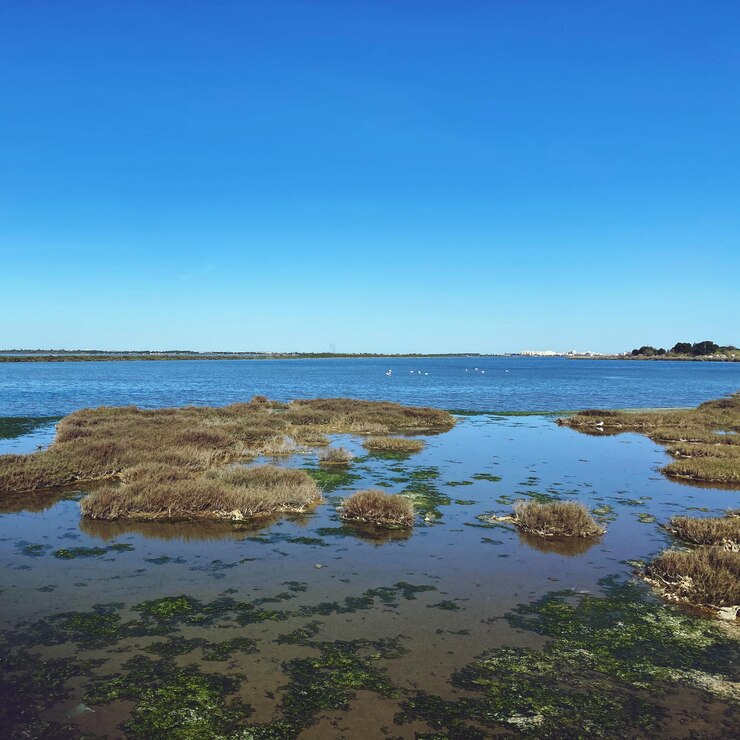
As of 2025, Ramsar Sites tally in India reaches 85 with 1.35 million hectares of dedicated land for Sustainable Ecosystem. Adding new coastal Ramsar sites in India significantly strengthens marine conservation efforts by recognizing and protecting vital coastal wetlands, which are crucial biodiversity hotspots and ecosystem services providers, while also contributing to international commitments for wetland conservation. These sites are home to a wide variety of flora and fauna, and their designation as Ramsar sites helps to ensure their long-term protection.
The Ramsar Convention is an international treaty focused on wetland conservation, and designation as a Ramsar site brings international recognition and support for these areas. This can lead to increased funding, technical assistance, and international cooperation for conservation efforts.
Coastal wetlands, including mangroves, estuaries, and lagoons, are rich in biodiversity, serving as crucial habitats for numerous species, including migratory birds, fish, and other marine life. Designation as Ramsar sites ensures the protection of these habitats and the species that depend on them.
Coastal wetlands play a vital role in maintaining ecosystem health and providing essential services like coastal protection, water purification, and nutrient cycling. Ramsar sites designation helps to ensure the long-term sustainability of these services. The Ramsar Convention’s focus on “wise use” of wetlands promotes sustainable development practices that benefit both people and the environment. By designating coastal areas as Ramsar sites, India can ensure that these valuable resources are managed sustainably for the long term.
What lessons can India take from other countries that are leading in marine conservation or coastal climate resilience?
The United Kingdom leads the world with 175 Ramsar sites followed by Mexico with 142 sites. India can learn from nations leading in marine conservation and coastal climate resilience by implementing strong policies, promoting community engagement, and investing in sustainable infrastructure and technology, while also fostering international cooperation.
The SDG-14 aims to sustainably manage and protect marine and coastal ecosystems from pollution, as well as address the impacts of ocean acidification. Enhancing conservation and the sustainable use of ocean-based resources through international law will also help mitigate some of the challenges facing our oceans. Marine ecosystems such as estuaries, coral reefs, marshes, lagoon, sandy and rocky beaches, mangrove forests and sea-grass beds are all known for their high biological productivity, which provide a wide range of habitat for many aquatic flora and fauna. The marine biodiversity has so far been looked at as a source of commercial products instead of appreciating their ecological values and services. This has resulted in over exploitation and several species are now on the verge of extinction. The IPCC special report on ‘Climate change and Biodiversity’ projects adverse impacts of climate change on natural ecosystems, such as coral reefs, mangroves and wetlands.
The important issues to be tackled are:
- Management and protection of marine and coastal ecosystems
- Controlling the Marine pollution, Impacts of ocean acidification
- Elimination of overfishing, manage stocks scientifically
- Conservation of coastal and marine areas
- Prohibit harmful fisheries subsidies
- Ensure economic benefits from sustainable use of marine resources (eg. Fisheries, aquaculture, tourism)
- Access of artisanal fishers to resources and markets.
Public Awareness & Education

What do you believe is the biggest misconception the public holds about the ocean?
A common public misconception about the ocean is the idea that it’s a vast, bottomless, and endlessly resilient system, capable of absorbing any amount of pollution or damage without consequence. This misconception leads to a lack of urgency in addressing critical issues like plastic pollution, overfishing, climate change impacts on marine ecosystems, and habitat destruction. It can result in a failure to recognize the serious and far-reaching consequences of human actions on the ocean, such as ocean acidification, coral bleaching, and disruptions to marine food webs. The belief that the ocean can handle anything can lead to complacency and inaction, hindering efforts to protect and conserve marine environments. Promote ocean literacy and understanding of the ocean’s delicate ecosystems, the threats they face, and the importance of conservation.
How can marine science be made more accessible and engaging for students and the general public?
Promote Ocean Literacy: Raise awareness about the importance of marine ecosystems and the challenges they face through public education campaigns. Promote ocean literacy and understanding of the ocean’s delicate ecosystems, the threats they face, and the importance of conservation. Create platforms for people to share their experiences, perspectives, and concerns about the ocean. Ensure that information is available in multiple languages and formats to cater to diverse audiences. Engage with Indigenous communities and incorporate their traditional knowledge and perspectives on marine ecosystems. Develop outreach programs that specifically address the needs and interests of different demographics and communities. Employ compelling visuals, videos, and storytelling to make complex scientific concepts understandable and engaging.
Are there simple lifestyle changes individuals can adopt that would positively impact marine health?
To ensure the long-term health of our oceans, individuals can adopt straightforward lifestyle changes that collectively make a significant impact. Reducing plastic consumption, conserving water, and choosing sustainable seafood are key steps toward minimizing pollution and protecting marine life. Treating wastewater before releasing it into rivers, which ultimately flow into the sea, can greatly reduce harmful contaminants. Additionally, reducing carbon footprints through sustainable transportation and energy choices helps mitigate climate change, which is a growing threat to marine ecosystems. Supporting sustainable fisheries and aquaculture practices ensures that seafood harvesting doesn’t contribute to overfishing, which disrupts marine biodiversity. By being mindful of these practices, individuals can help safeguard the delicate balance of ocean ecosystems, promoting not only marine health but also the well-being of humans who rely on these resources for food, medicine, and livelihood.
Youth, Technology & the Future
What advice would you give to young researchers and students aspiring to work in marine science?
To thrive in marine science, young researchers and students should get involved, seek diverse experiences, network actively, and stay curious and adaptable, focusing on both practical skills and soft skills like communication and teamwork. Seek opportunities to volunteer or intern with marine-related organizations, aquariums, or research institutions to gain hands-on experience. If possible, enrol in diving programs to gain experience in underwater research and fieldwork.
Pursue a career in research, teaching, or academia, focusing on specific areas like marine biology, oceanography, or marine conservation. Work in marine conservation, fisheries management, or environmental policy to protect marine ecosystems. Explore opportunities in aquaculture, marine biotechnology, or environmental consulting.
How can emerging technologies (like satellite imaging, underwater drones, AI, etc.) be harnessed to support ocean conservation?
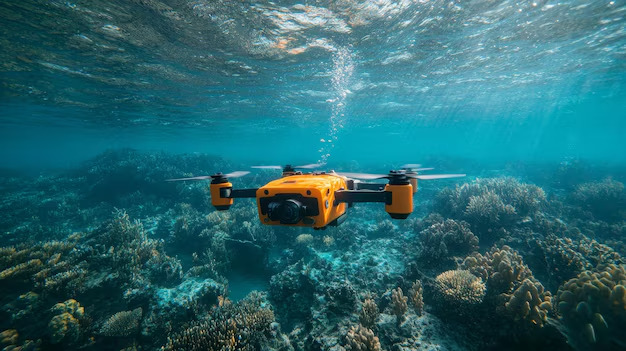
Emerging technologies like satellite imaging, underwater drones, and AI can significantly support ocean conservation by enabling real-time monitoring of marine ecosystems, tracking marine life, detecting illegal activities, and facilitating data-driven decision-making for better resource management and policy implementation.
Satellites can track changes in ocean currents, temperature, salinity, acidity, and pollution levels, providing a broad overview of ocean health. Satellite imagery can be used to identify and track fishing vessels, helping to detect and deter illegal, unreported, and unregulated (IUU) fishing activities. Satellites can map coral reefs, seagrass beds, and other vital marine habitats, allowing for better understanding of their distribution and health. Satellite imagery can help track large-scale plastic pollution and other forms of marine debris, aiding in cleanup efforts and preventing further damage to marine ecosystems. Underwater drones (AUVs and ROVs) can explore deep-sea environments, mapping ecosystems, documenting biodiversity, and collecting data that is difficult or impossible to obtain through traditional methods.
AI algorithms can analyse large datasets from satellite imagery, underwater drones, and other sources to identify patterns, trends, and anomalies that might otherwise be missed. AI can be used to predict changes in ocean conditions, such as the timing and location of algal blooms or the movement of marine species. AI can be trained to identify marine species from images and videos, helping to track biodiversity and monitor populations.
Do you think citizen science can play a meaningful role in monitoring coastal and marine health?
Yes, citizen science can play a vital role in monitoring coastal and marine health by empowering communities to collect data, monitor species, and report on ecosystem changes, filling gaps in scientific research and increasing ocean literacy. Citizen science programs can significantly increase the number of observations, their spatial and temporal coverage, and the frequency of monitoring, which can be cost-effective. Citizen scientists can be among the first to detect changes in marine ecosystems, such as the appearance of invasive species or shifts in species distribution, enabling rapid responses. Citizen science can address data gaps in areas where traditional research methods are limited, such as in monitoring seagrass beds or the distribution of marine debris. Participating in marine citizen science can engage communities with the ocean, raise awareness about marine issues, and increase ocean literacy.
The ICAR-Central Marine Fisheries Research Institute (CMFRI) in Kochi actively promotes citizen science initiatives in marine fisheries research, using the mobile app “MARLIN@CMFRI” and other programs to engage the public in data collection and research efforts.
Personal Insight
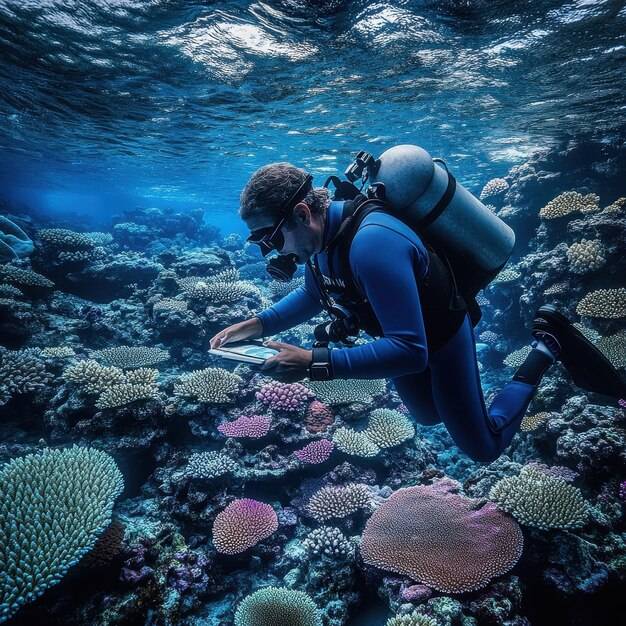
What inspired your interest in marine biology and ecology?
Being a coastal city dweller we are often inspired to study marine science by a combination of factors, including a strong personal connection to the ocean, witnessing environmental challenges first-hand, and a desire to understand and protect the marine environment that sustains their communities. The vastness, power, and beauty of the ocean can evoke a sense of awe and wonder, sparking curiosity and a desire to learn more about this complex ecosystem. Living in a coastal city provides opportunities to observe marine life, tides, and weather patterns, which can foster a deeper appreciation for the ocean and its processes. Coastal cities often have a strong connection to the ocean, and this “sense of place” can create a powerful emotional connection that inspires people to protect their local marine environment. The presence of marine research institutions, universities, and industry in coastal areas also provided opportunities for education, research, and employment in the field of marine science.
Are there any personal experiences—on the field or in nature—that deeply shaped your environmental perspective?
Cochin (Kochi), with its location on the Arabian Sea coast, serves as a natural hub for marine and ocean studies, inspiring research and fostering a deep understanding of the Indian Ocean and its complexities. Kochi is home to the National Institute of Oceanography (NIO), which conducts research on various aspects of oceanography and climate science. I was fortunate enough to get an opportunity to conduct research and dissertation work during the Bachelor Degree course in Zoology. The experience at NIO, Kochi where various research activities were conducted in the area of Oceanography and marine Sciences kindled the interest in taking up the research career in marine sciences.
If you could recommend one book or documentary on oceans, what would it be and why?
Marine Biology: Function, Biodiversity, Ecology by J.S. Levinton
Describes marine biology from a unique global and evolutionary perspective. Clear, thorough explanations written in a highly-engaging style that students actually enjoy reading. This book has a Principles-driven approach. It focuses on interaction of basic biological principles, makes the material digestible and governs the text’s three major themes: functional biology; biodiversity; and ecological processes.
The Blue Planet: Seas of Life and Deep Ocean Narrated by David Attenborough: It brings the natural world into our living rooms.

